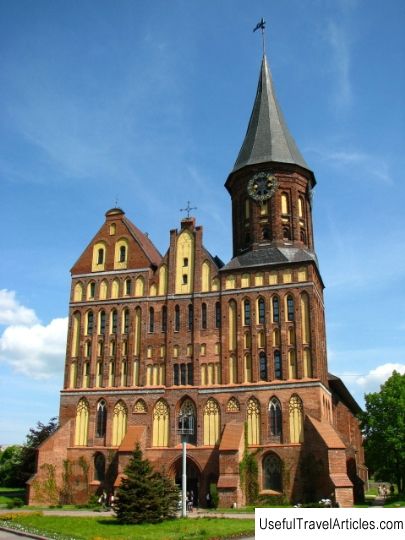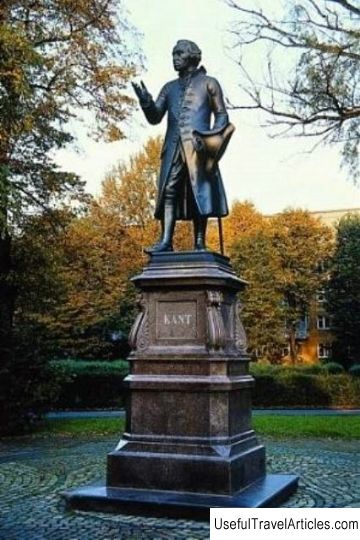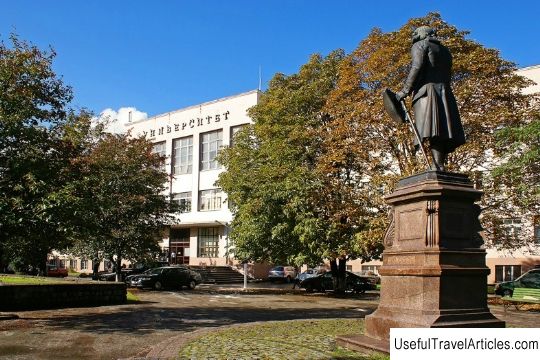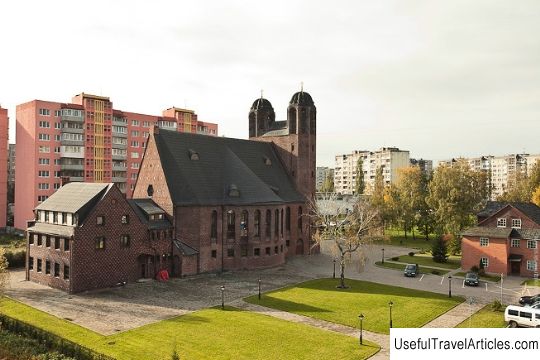Konigsberg Cathedral description and photos - Russia - Baltics: Kaliningrad
Rating: 9,4/10 (1943 votes) 
Konigsberg Cathedral description and photos - Russia - Baltics: Kaliningrad. Detailed information about the attraction. Description, photos and a map showing the nearest significant objects. Photo and descriptionOne of the most recognizable symbols of the city of Kaliningrad is the building of the Konigsberg Cathedral, located in the historic center of Kneiphof, on the island of Kant, surrounded by the Pregol River. A small picturesque island with the main architectural attraction of the city today is buried in greenery and is connected to the mainland by two bridges. The first Konigsberg Cathedral was erected in the thirteenth century in the southwestern part of Altstadt (an area where German colonists settled). In 1327, a new site was allocated for the construction of a larger main temple of the Konigsberg fortress on the Kneiphof island (now the Kant island). The first documentary mention of the cathedral dates back to September 1333, when the master of the Teutonic Order Lutger approved the continuation of the construction of the magnificent structure. The bricks of the Altstadt Cathedral served as the material for the construction of the new church, and to transport them to the island, a temporary bridge and gate were built, called Cathedral. The bridge, which had served for about fifty years, was dismantled, and the temporary gates in the city wall of Altstadt stood safely until the bombing of the Second World War (more than six hundred years). In 1335 the cathedral was consecrated in honor of the Body of Christ. Until the sixteenth century, the religious building was the main Catholic church in the city. Later, the territory of the cathedral and the altar part of the temple functioned as a burial place for representatives of the higher hierarchy. For five hundred years, the building of the cathedral was rebuilt, the interior was supplemented and changed: in 1380-1400, the cathedral was completely painted with frescoes, in 1553 towers were added to the facades, on one of which a vane-mermaid was installed, and a three-aisled building was added to the western part, in 1640 a clock was installed in one of the towers with fight and in 1695 the organ appeared. In the 1520s, the building of the University of Albertina was erected in the neighborhood and the temple functions as a university. The last in the cathedral tomb for university professors was Immanuel Kant. During the Second World War, the Konigsberg Cathedral was badly damaged and in the post-war years it was a ruin. The cult building was saved from demolition in Soviet times by the grave of the philosopher Kant. Since 1960, the building has been an architectural monument (of republican significance), but no restoration work took place there until the 1990s. In 1989, the building of the former cathedral was included in the UNESCO list of world cultural monuments. Today the Konigsberg Cathedral is a cultural and religious center. The restored building houses the Orthodox and Evangelical chapels, the cathedral museum and the Immanuel Kant museum. Concerts of religious and classical music are held regularly in the Konigsberg Cathedral, and international organ competition is held.       We also recommend reading History Museum (Shkoder History Museum) description and photos - Albania: Shkoder Topic: Konigsberg Cathedral description and photos - Russia - Baltics: Kaliningrad. |




